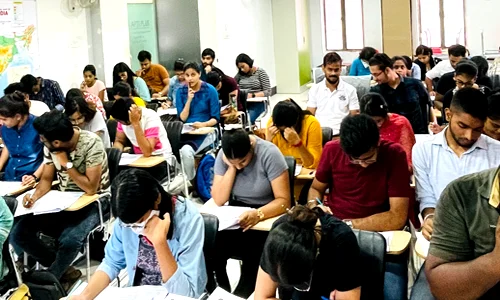



The Sujalam Bharat Summit 2025 seeks a unified national plan to tackle India’s water crisis. Led by the Jal Shakti Ministry, it sets five priorities across river revival, greywater use, and technology. A whole-of-government approach aims to fix governance gaps and scale community-driven solutions for water security.
Click to View MoreAir pollution in India significantly impacts children’s growth, leading to stunted physical development, respiratory problems, and cognitive impairments. Studies from Delhi-NCR, Punjab, and Vidarbha show that prolonged exposure to fine particulate matter and toxic air pollutants reduces height and lung capacity in children under five. Effective government measures and community-level interventions are crucial to protect children’s health and ensure equitable development.
Click to View MoreShort-term exposure to PM2.5, especially from landscape fires and urban pollution, significantly increases hospital admissions among children and adolescents for respiratory, infectious, cardiovascular, neurological, digestive, and other illnesses. Children aged 5–9 years and those from lower socioeconomic backgrounds are particularly vulnerable.
India has implemented measures like the National Clean Air Programme (NCAP), Pradhan Mantri Ujjwala Yojana (PMUY), air quality monitoring, and crop residue management to reduce PM2.5 exposure. However, challenges persist due to high ambient pollution, indoor smoke, socioeconomic disparities, and gaps in awareness.
A multi-pronged approach involving regulation, clean energy adoption, indoor air quality improvement, public awareness, and child-specific protective measures is essential to safeguard children’s health and reduce the long-term impacts of air pollution.
Click to View More
The domestic workforce, mostly women from marginalized communities, faces exploitation due to informal work and lack of rights. Denied fair wages and protection, they remain invisible. The Supreme Court directed the Centre to form an expert committee to draft a protective law.
Click to View MoreIndia's economic growth is currently driven by strong public investment, while private domestic investment remains weak despite high corporate profits. Indian firms are increasingly investing abroad, but global uncertainties highlight the need to refocus capital within the country.
Click to View MoreIndia faces a growing cancer burden due to lifestyle changes, aging population, and tobacco use. Challenges include late diagnosis, lack of specialized healthcare, and financial burdens. Government initiatives like National Cancer Grid and Ayushman Bharat are crucial for prevention, early screening, and affordable treatment.
Click to View MoreThe Environment Ministry has notified new guidelines under the Environment Protection Act that provide a procedure for dealing with chemically contaminated locations. The Environment Protection (Management of Contaminated Sites) Rules, 2025, provide a legal framework for tackling chemical contamination that was previously lacking, although several such sites have already been discovered around the country.
Click to View More
© 2025 iasgyan. All right reserved